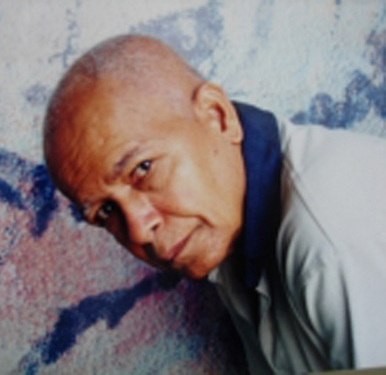By Stanley Greaves
Before commenting on Ron Savory the artist, note must be taken of his association with the Theatre Guild in charge of lighting electronics and stage setting. He too, like Marc Matthews, was a member of Ravens, the first basketball team founded by Ken Corsbie who had introduced the sport to Guyana. Savory was very knowledgeable in Jazz and Classical music and produced the British Council Classical programme on Sundays. He would also invite friends at his home listen to CD’s. Like Wordsworth Mc Andrew he was trained in Radio at the BBC as a producer-announcer and worked for Guyana Broadcasting Corporation before leaving for Barbados and St.Lucia finally.
Savory studied Art with E.R.Burrowes at Queen’s College in the 1950’s. He later joined Burrowes’ Working People’s Art Class producing small format paintings for a while. The breakthrough came with his appointment as a Civil Servant to the District Commissioner’s Office at Kamarang in the Mazaruni. For so many of us visiting the rainforest the twilight zone of its canopy is quite a visual delight where, despite the light, shadows become “shadowy”, almost nonexistent, quite unlike those defined by strong sunlight. Savory responded to this experience and began working on two fronts using images from his contact with the life and culture of our indigenous peoples -the canoes by creek and riversides and Timehri symbols, and the striking quality of light in the forest. He also experimented with sand to create textures providing additional feeling to the usual flat surfaces of pictures. These early works were shown in a 1961 exhibition along with Michael Leila, Emerson Samuels and myself held on the upper floor of Bookers Universal Building.
After these works he soon began to focus more on the forest itself attempting to capture the effect of sunlight filtering through leaves and between sky reaching tree trunks. This allowed him to capture the wide range of greens, yellows and browns creating a living informal pattern almost abstract in quality while still referencing leaf shapes with occasional presentations of birdlife. The forest floor which could also provide a range of colours mainly in browns and yellows, did not capture his full attention and was infrequently referenced in some works. Paintings began to increase in size and one could well imagine compositions extending beyond frames. He did in fact produce a mural for the Pegasus Hotel which was subsequently painted over despite protests. In works like overhead views of the Rupununi an abstract kind of composition emerged at times but was not sustained.

